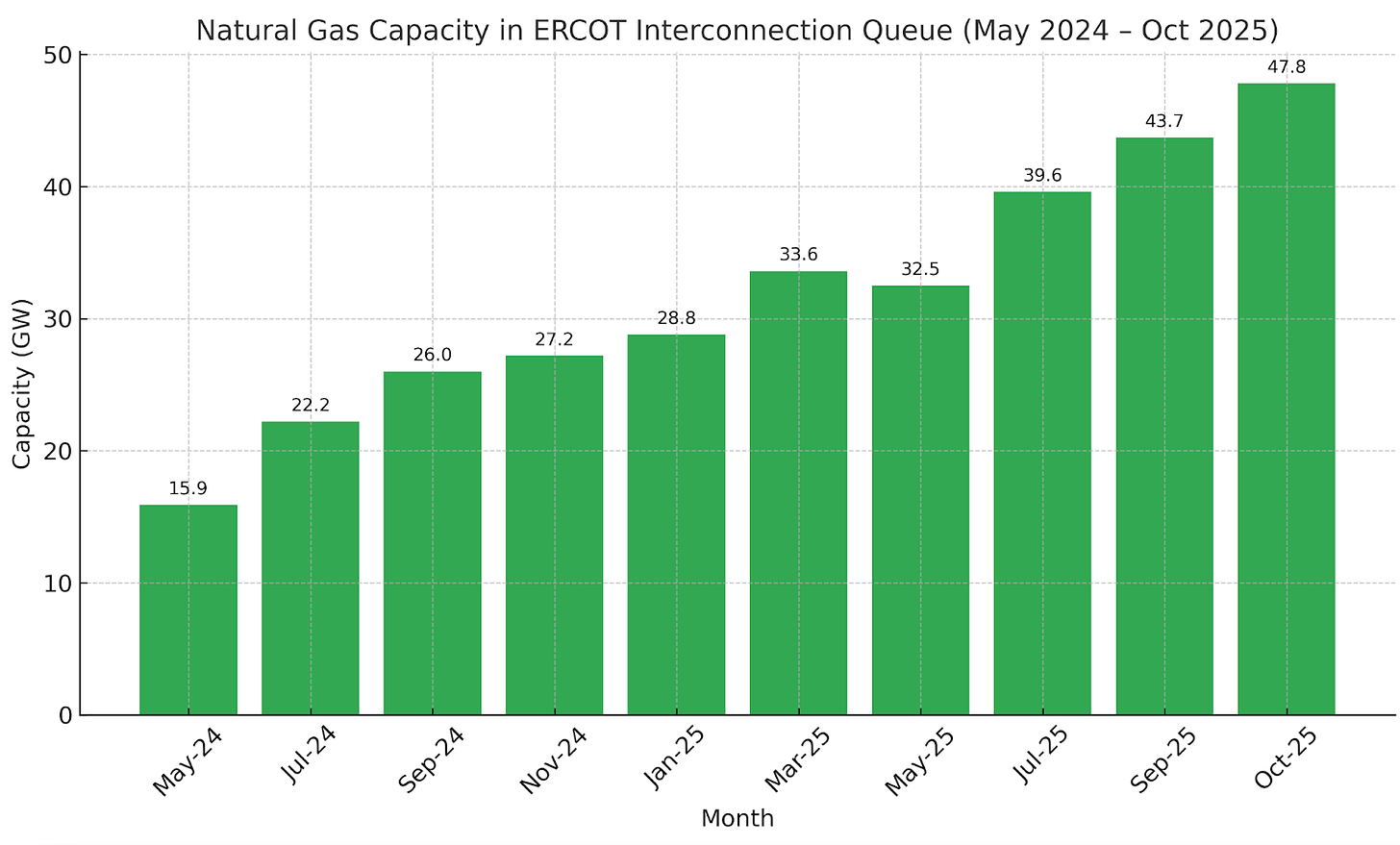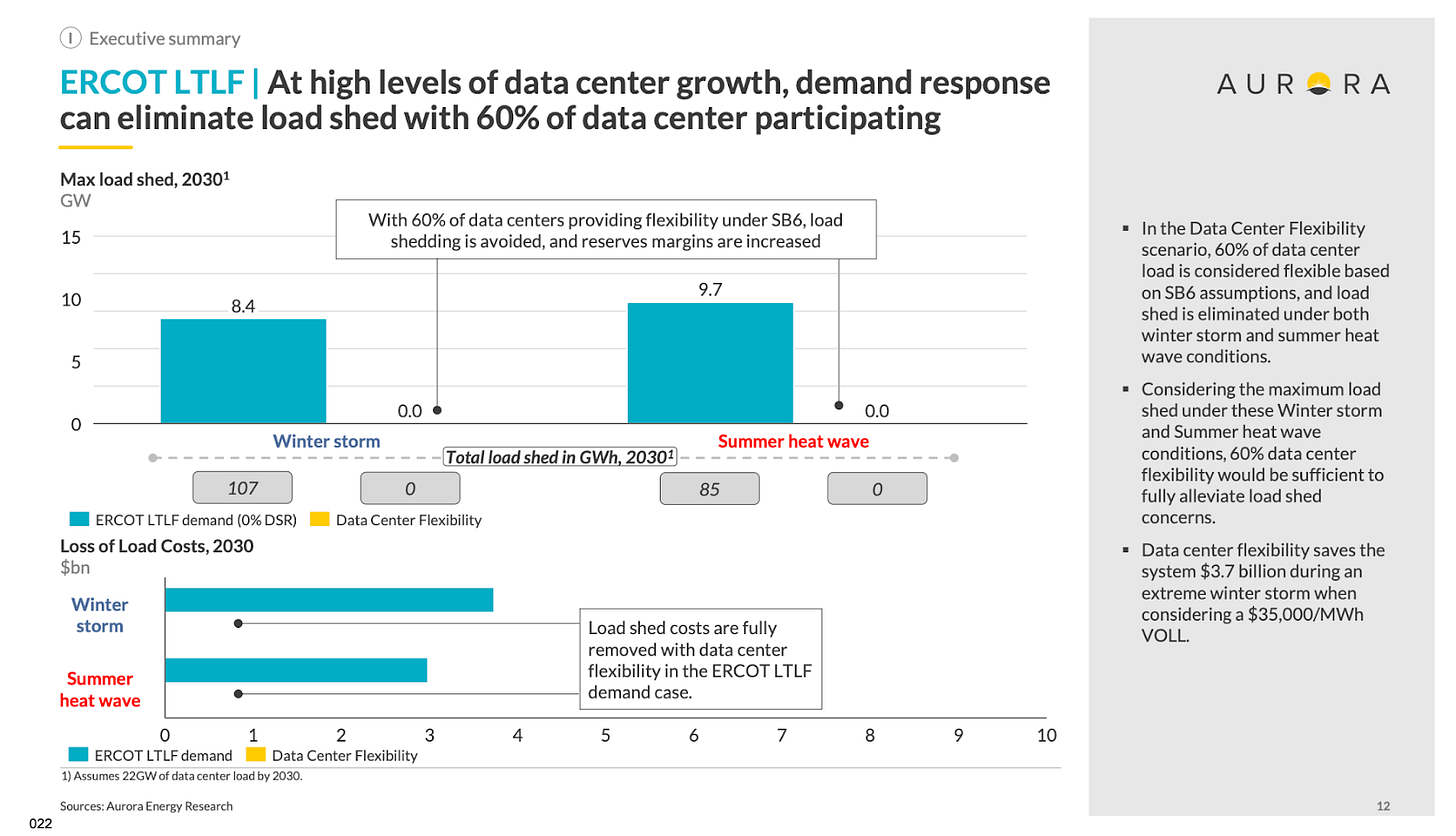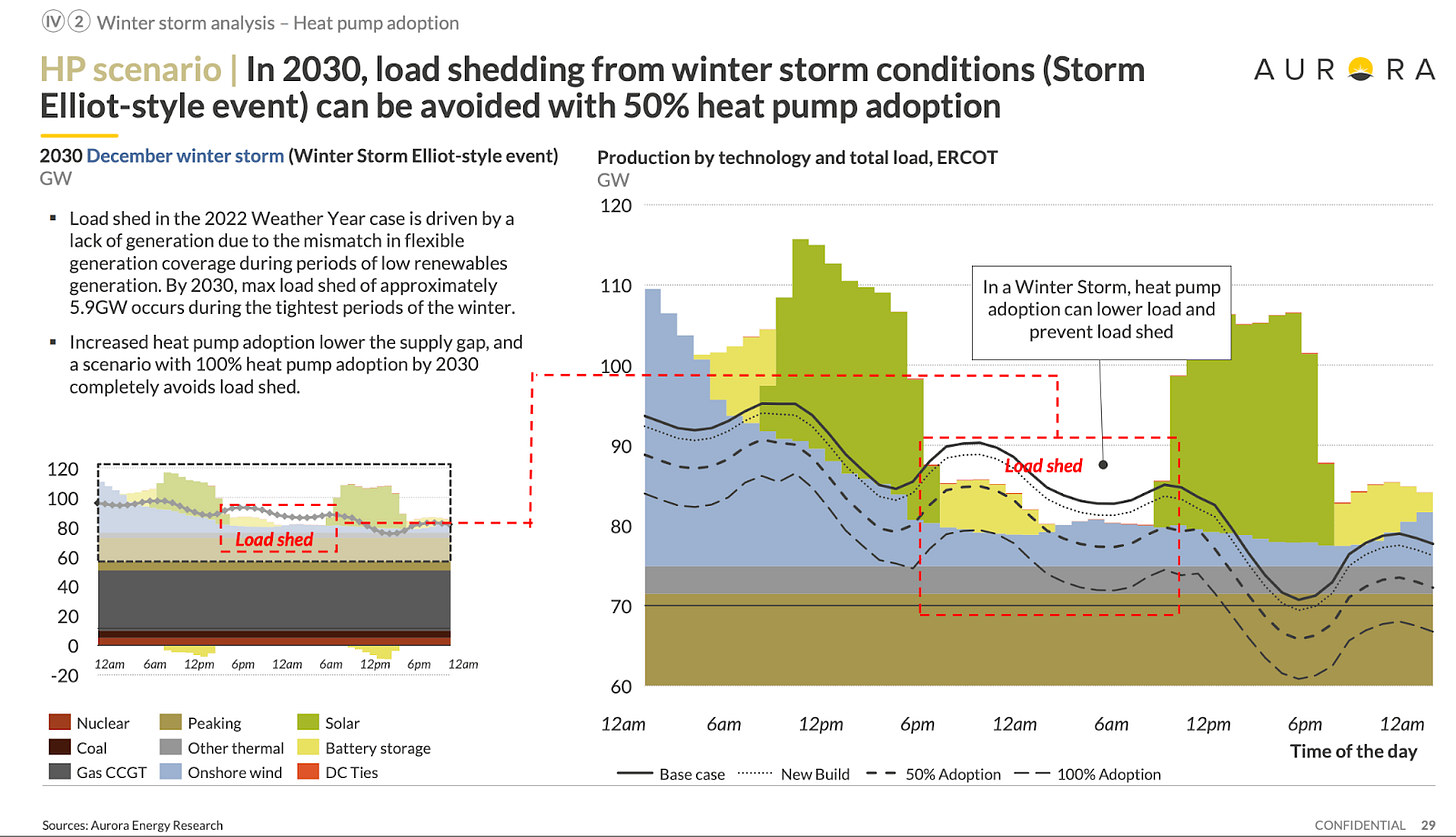An Expensive and Unnecessary Capacity Market
Tomorrow the PUC will discuss a new ERCOT proposal, called DRRS Plus, to establish a capacity market. There are far less expensive and more effective solutions available to the PUC and ERCOT.
The Texas energy market is in a massive boom cycle right now. Electric consumption is up 25% in four years. There are 48 gigawatts of gas plants in the interconnection queue, up from just 16 gigawatts in May 2024.
There are over 400 gigawatts of total generation and over 200 gigawatts of large load waiting for interconnection. Planned investment in the grid is at an all time high.
Which makes the timing of ERCOT’s DRRS Plus proposal curious. DRRS Plus is a capacity market. It looks very similar to the ill-fated Performance Credit Mechanism. It’s expensive and likely unnecessary when compared to the other things we could be doing.
ERCOT wants to carve out a more than $4 billion capacity market to give more money to thermal resources at a time when thermal resources are doing quite well. Here’s a look at the stocks of the two biggest thermal generators in Texas:
Looking to protect consumers, in 2023, the legislature put a gross cap of $1 billion on the controversial Performance Credit Mechanism. This DRRS Plus proposal looks very similar and would cost more than $4 billion.
ERCOT leadership is doing a very human thing: they’re looking for the one solution that will make our grid bullet-proof. But the models Aurora Energy Research ran for ERCOT show that there would still be outages if DRRS Plus is put into place.
There’s no silver bullet, only silver buckshot. ERCOT and the PUC – the PUC will be the decision maker unless the Legislature decides to intervene – should implement DRRS as it was intended: as an operational reserve which will be one tool among many in the toolbox.
When the Legislature passed it, DRRS was not intended to be the vehicle to establish a capacity market in Texas; to the contrary, it was meant to be a tool that would help increase reliability and deal with uncertainty as an alternative to a capacity market.
Interestingly, according to Aurora’s model if there was a silver bullet – and there isn’t – it’s data centers. They show that outages – in both summer and winter – fall to zero under a large load growth scenario if 60% of data centers are flexible.
Of course, data center load may not reach the requisite scale (22 gigawatts) by the end of 2030. It’s also possible – with the right regulations – that a much higher percentage of data centers will be flexible with a combination of onsite resources, flexibility of demand, and the purchase of demand reductions from residential and small commercial customers. With the potential to participate in demand side markets for energy efficiency and demand response, all data centers could be flexible or purchase flexibility, meaning we would need only 13 gigawatts of data centers to get to “0.0” “max load shed” by 2030, according to the models run for ERCOT.
Texas regulators, policymakers, and ERCOT will have to do many things right. We’ll need strong, clear, and consistent requirements for data centers to bring flexibility – from whatever source – but we’ll also need to speed their interconnection, an area where ERCOT lags.
We’ll need robust demand response from big and small customers alike, clean firm resources like nuclear and geothermal, more renewables and battery storage, more gas peakers, and – perhaps most importantly of all given the impact on winter reliability – energy efficiency. In fact, though it isn’t even mentioned in the 100+ slides of Aurora’s presentation, a report Aurora released only six months ago found that “in a winter storm, heat pump adoption can lower load and prevent load shed.”
DRRS Plus is another distraction (like the PCM was) and would likely set up an epic battle between the PUC and the Senate (like the PCM did) if the PUC goes down this path.
Last week, energy affordability took center stage in elections in Georgia, Virginia, and New Jersey. Consumers are angry about high energy costs.
Texas should prioritize actions that increase reliability and reduce costs. If we exhaust actions that achieve both goals, then, and only then, should we look to artificially increase costs, as DRRS Plus would do. But we are nowhere near that point now.
At a time when Texas is attracting investments in generating resources at a scale other states and regions can only dream of, it would be a mistake to throw more money at generators at the expense of consumers. DRRS should be implemented as it was intended – as another operational reserve, not as a capacity market.
The PUC and ERCOT need to prioritize solutions that strengthen the grid and ensure that Texans can actually afford to pay for power.
Thanks for reading. I’ll host a paid subscriber chat during the PUC Open Meeting tomorrow at 10 a.m. CT when this proposal will be discussed.





